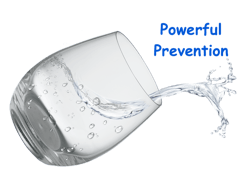WQRF Study Highlights Economic Benefits of Point-of-Use Filtration
Kimberly Redden is foundation relations & research manager for WQRF. Redden can be reached at [email protected] or 630.929.2512.
undefinedA recent study conducted by researchers from the University of Arizona and funded by the Water Quality Research Foundation (WQRF) highlighted the economic benefits of using point-of-use (POU) devices to reduce health risks in drinking water. WQP Managing Editor Lauren Del Ciello asked Kimberly Redden, foundation relations and research manager for WQRF, about the results of the study and its larger impact on the water treatment industry.
Lauren Del Ciello: Why was the study commissioned?
Kimberly Redden: WQRF had an opportunity to fund novel research that had never been done before, led by Kelly Reynolds, Ph.D., and Chuck Gerba, Ph.D., at the University of Arizona. The scope of the study was to provide an analysis of the cost and benefits of POU water treatment in terms of protection from individual contaminants in drinking water and exposure to multiple contaminants. A holistic approach to document the cumulative benefits of removal of multiple contaminants that may be present in drinking water had never been conducted before.
The scope of the study was to assess a national implementation of a POU device to treat the specific contaminant, which included the cost of installation and maintenance of the appropriate POU treatment over five years in every single home in the U.S. Five contaminant categories were studied: microorganisms, arsenic, lead, disinfection byproducts, nitrates and chromium. For lead, the researchers conducted a case study of Flint, Mich., in lieu of a national study, which informed the cost-benefits that can be achieved at a localized level with known contamination or non-compliance issues.
Del Ciello: How did the researchers calculate the benefit of POU devices in minimizing health risks?
Redden: Using estimated cases of illness from exposure to drinking water and the associated costs from what was available in scientific literature, the researchers calculated the cost of the cases caused by each contaminant from drinking water consumption. These estimates are used along with case reductions using a POU device, also from what was available in the literature, to generate a cost-effectiveness equation, which then a monetary value per averted case could be calculated.
Del Ciello: What contaminants were investigated, and which were POU devices found to provide the most return against?
Redden: The study found that when looking at the overall exposure to all contaminants, the cost of POU devices was outweighed by the benefits in terms of preventing exposure and disease. For example, the benefits of a device to remove arsenic and pathogenic microorganisms have a dual cost-benefit for both contaminants because there is always a benefit in illness reduction from microbes on an immediate timescale and a lifetime benefit for reducing arsenic exposure.
For pathogenic microorganisms, the burden of drinking water-related morbidity and mortality cases in America is estimated at $24.2 billion annually (n=9,645,733 includes acute gastrointestinal illness, sequelae and death). An annual reverse osmosis (RO) POU treatment cost per household per year for a national household intervention cost of $17.1 billion annually. Please note, specific POU treatments are required for viruses, bacteria and protozoa removal, but exploring the effects and cost benefits of a treatment train is beyond the scope of this project.
In the case of the water emergency in Flint, the study assumed all of the 98,310 Flint residents were exposed to lead levels of 25 µg/L in drinking water, and 20% of lead in drinking water is manifested in the body as blood lead levels. This corresponded to an average blood lead level of 0.5 µg/dL and a loss of 0.257 IQ points. Using the blood lead level to lifetime economic impact model, this corresponds to a lifetime loss of $5,381 per person and a total community cost of $435 million. The average household size in Flint is 2.42 persons, which equates to 40,064 houses. A five-year community wide intervention using one activated carbon filter with lead adsorption capabilities per household would have cost $11.1 million. A five-year POU RO implemented in every home would have cost $26 million.
Del Ciello: How can the information in the study be leveraged by water treatment professionals?
Redden: It is our hope that with this data in hand, water treatment professionals can talk to their regulators and utilities about this study and encourage the acceptance of POU devices as a risk mitigation strategy. The results of the case study in Flint are powerful in terms of the cost to society from lead exposure versus cost for a prevention strategy using POU devices.
